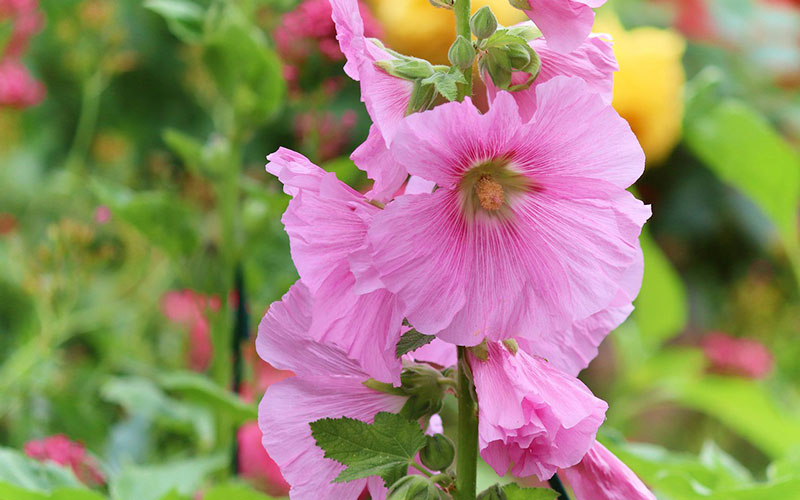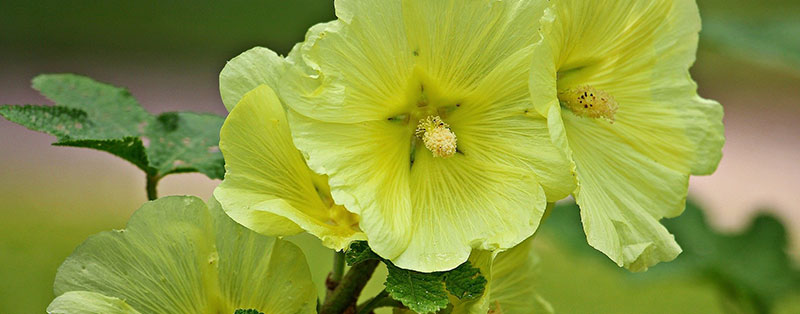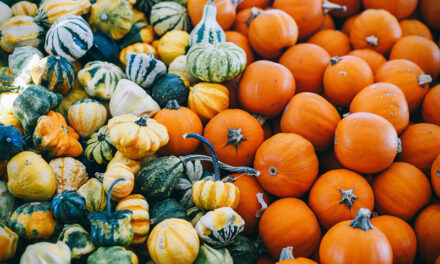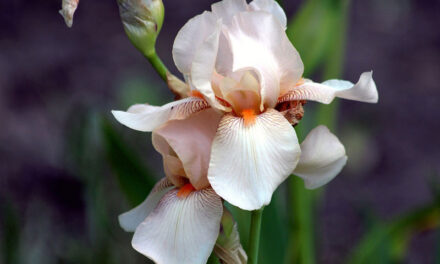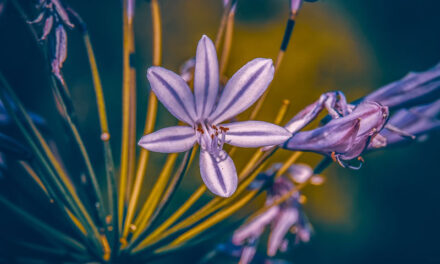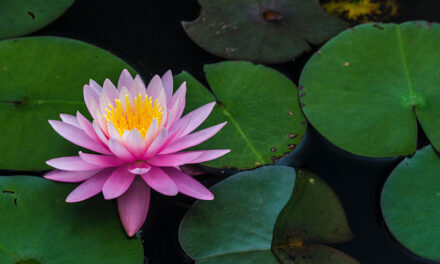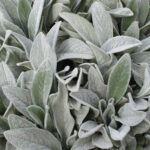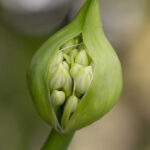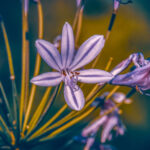There is always room for a hollyhock, all you need is a wall or fence, where it can stand against. The Alcea rosea likes to be somewhat sheltered, especially from the wind. This is to prevent the long flower stems from snapping in strong winds. The plant needs little moisture, only with long drought is it advisable to give it some water. It does not need much nutrition to grow, in principle, the hollyhock can be grown in any type of soil.
Hollyhocks come in all colors, shades of white, pink, salmon, purple, dark purple, yellow, red and black. The flowers grow between 1 and in exceptional cases 3.7 meters high. On average, they grow to about 2 meters in height. They like a sheltered spot in the sun. During flowering the plant attracts many bees and bumblebees. In the period from June to September you can enjoy the flowers of this beautiful ornamental plant. Alcea or Althea is the scientific name of the hollyhock.
Plant Hollyhock
Hollyhock is a biennial plant that self-sows. You sow the seeds in the ground in spring or fall. Because biennials take a year to bloom, it depends on the time of sowing when your Hollyhock will bloom. Sowing is not difficult, just put the seed in the earth, preferably right away in the desired spot and cover with some soil.
When to sow hollyhock?
If you sow the seeds of the hollyhock in the fall, then you can expect the flowers in the following year in the spring. If you sow in the spring, then for the biennial variety, your blooms will be in the following year. There are also annuals, which bloom the year you sow them.
Hollyhock in pot
Hollyhocks can be pre-sewn in a pot. However, they prefer a sheltered spot, along a fence or wall. Because the taproot of the Ball Rose is quite long, it is not practical to put your Hollyhocks in a pot. Once they have germinated, find a suitable spot in your garden and leave the hollyhock there.
Can I relocate Hollyhock?
Because the hollyhock has a long taproot, where it carries the length of the stem, it is not advisable to move this ornamental plant. It is better to wait until the hollyhock produces its new seed, which you then plant in the place where you want the Alcea rosea and then remove the ornamental plant where you no longer want it. Do keep an eye on any seedlings, because the hollyhock will self-sow.
Prune Hollyhock
If the hollyhock is sown in the spring, it will produce only a rosette of leaves. It will flower the following year. If you sow it in the fall, it will bloom in the summer the following year. After that, it is important that you cut off the stem with spent flowers. The plant will then put its energy into creating new offshoots in the old rosette.
Seeds of the hollyhock
In the fall, you can take the seeds from the spent flowers and put them in the ground like this. This way you can enjoy the hollyhocks every year. If the seeds are damp, when you harvest them it is best to lay them out to dry for a while. Hollyhocks do not like damp locations. Only when the weather is dry for a longer period of time can you give them some water. If you do not remove the seed pods, the hollyhock will reproduce itself by dropping its seeds.
Hollyhock varieties
Hollyhocks are available in many colors. From pastel shades, white, pink and lilac to bright colors yellow, red and black or very dark purple. The special thing about hollyhocks is that when you harvest seed from a plant, it might just be a surprise what comes out of the new seed. This does not necessarily have to be the same color flower as the original plant had.
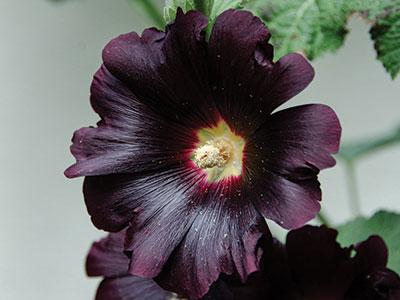
Black hollyhock
Known by its scientific name Alcea Rosea ‘nigra’. The color of the flower is actually so dark purple that it appears black.
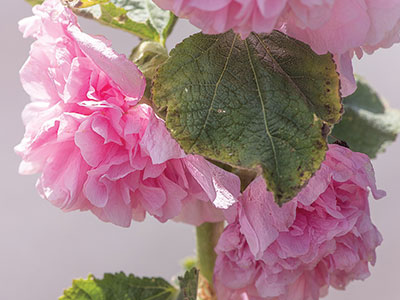
Hollyhock double flowered
For example, the Alcea Rosea Doppia or Alcea Rosea Chaters Double Hybrid, these are flowers with a filled leaf, more resembling a rose. Available in red, white, yellow and pink.
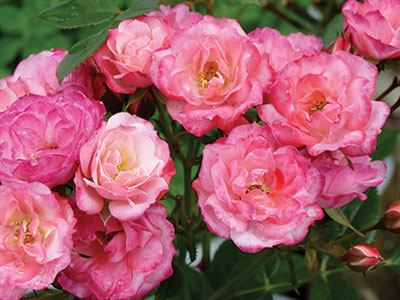
Annual hollyhock
Alcea Rosea Annua is an example of this. They tend to stay just a bit smaller than the biennial varieties. In addition, you should plant them a little earlier, around late February, early March. The Alcea Rosea Summer Carnival is also an annual species.
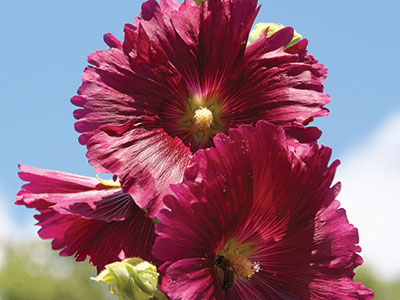
Biennial hollyhock
Most species are biennials, the black species, double-flowered species. Examples of biennial species: Alcea Rosea, Alcea Rosea Chater, Alcea Rosea Hybrida semperflorens and Alcea Rosea Allegheny.
Are hollyhocks poisonous?
Hollyhocks are not poisonous, neither to humans nor to animals. They can, however, cause irritation when touched, such as itching and redness.

